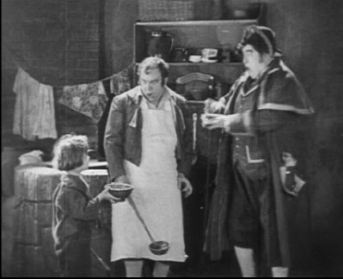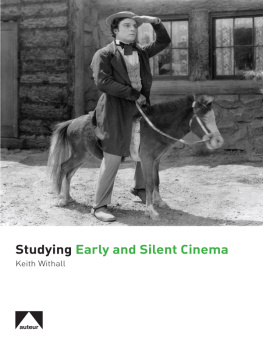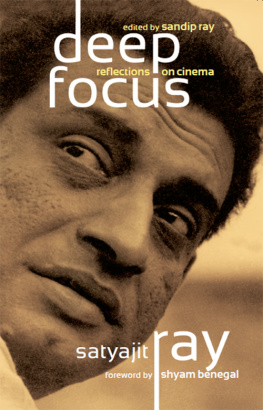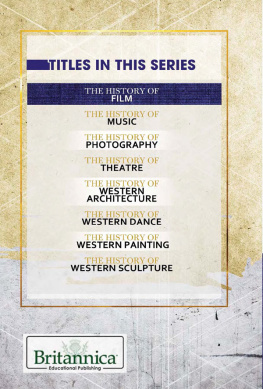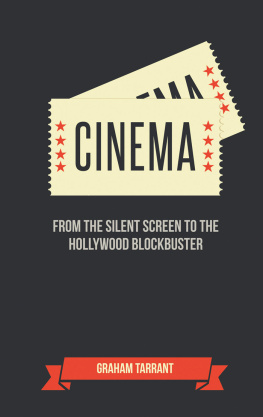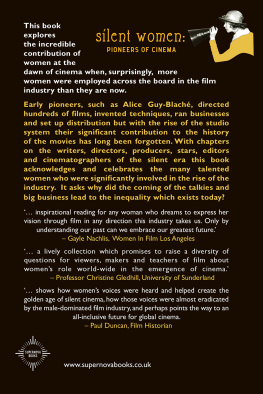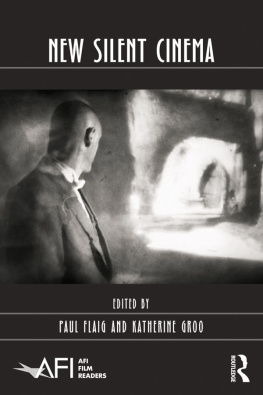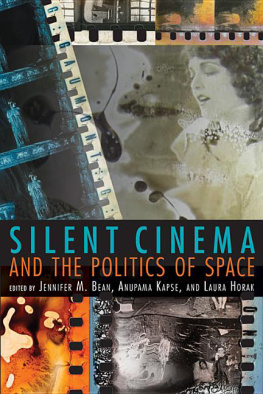STUDYING EARLY AND SILENT CINEMA
STUDYING EARLY AND SILENT CINEMA
BY
KEITH WITHALL
First published in 2009 as Early and Silent Cinema: A Teachers Guide.
This revised edition published in 2014 by
Auteur, 24 Hartwell Crescent, Leighton Buzzard LU7 1NP
www.auteur.co.uk
Copyright Auteur Publishing 2009; 2014
Designed and set by Nikki Hamlett at Cassels Design www.casselsdesign.co.uk
Cover: Our Hospitality (1923)
All rights reserved. No part of this publication may be reproduced in any material form (including photocopying or storing in any medium by electronic means and whether or not transiently or incidentally to some other use of this publication) without the permission of the copyright owner.
E-ISBN 978-1-906733-87-2
British Library Cataloguing-in-Publication Data
A catalogue record for this book is available from the British Library
ISBN 978-1-906733-69-8 paperback
ISBN 978-1-906733-70-4 cloth
ISBN 978-1-906733-87-2 e-book
CONTENTS
KEITH WITHALL has taught in adult education, FE and HE, and delivered both the pre- and post-2000 A level Film Studies syllabuses, for over twenty years. He developed a particular interest in early and archive film from attending Le Giornate del Cinema Muto and ll Cinema Ritrovato Festivals, starting at Pordenone in 1993. He has a blog dedicated to Early and Silent cinema at http://cinetext.wordpress.com.
Dedication, thanks and acknowledgement
I want to thank the organisers, staff, supporters and participants at Il Giornate del Cinema Muto Pordenone and Sacile and also of Il Cinema Ritrovato Bologna. These are the events at which I have seen most of the silent films I have enjoyed, along with the music, the translations and the film notes and the after-screening discussions.
STILLS INFORMATION
All illustrations courtesy of the Joel Finler Archive, except: Oliver Twist (p. 5), the Lumire brothers (p. 12), Le Voyage travers limpossible (p. 17), The Great Train Robbery (p. 19), Our Hospitality (p. 90), The Man with a Movie Camera (p. 110), on the set of Blackmail (p. 131), A Cottage on Dartmoor (p. 145), BFI Stills; portrait of Oscar Micheaux (p. 124), Barton County Arts Council; An Unseen Enemy (pg. 36), Mad Love (pg. 61), authors own.
Our sense of cinema as a site of commercial entertainment can be traced back to the Lumire brothers. In December 1895 they attracted a fee-paying public in Paris to sit and watch flickering images on an illuminated screen. The commercial Pandoras Box they opened was to blossom in a few years into a world cinema industry and, at its peak, the fantastical Hollywood. Yet in the 30 years in which this miraculous construction was accomplished, audiences rarely had to listen to films, only watch them. Hence, the early decades of cinema were characterised by the title silent. In fact, there was a lot of noise, machinery, audiences, musicians and commentators. Even so, the absence of the human voice and dialogue make the films seem rather strange when viewed by a modern audience.
Equally unfamiliar now are the frequent appearances of title cards imparting dialogue and plot. The screen image was different, commonly in black and white rather than colour. And it was projected in a square frame rather than a letterbox. Yet despite these important differences the mature silent films had many common features with those produced today. The majority related stories, frequently melodramatic and commonly constructed around action. Some of those stories are actually recycled in modern versions. The silent period had epics like The Fall of Troy; its own versions of classics like Romeo and Juliet
Oliver Twist (1922)
They still, today, offer unexpected pleasures. Silent film historian Kevin Brownlow, speaking on BBC Radio 4, commented: The silent film, actually its a misnomer, silent sounds as if youre missing something, in fact when you see a silent film, you dont miss the dialogue, and you do not miss the effects. You supply all these. Its rather like watching ballet. You become a creative contributor to it in a way that you dont with a sound film because everythings done for you. Thats why I think that people who remember the silent film were so deeply in love with it. Most silent films were accompanied by music, frequently a piano, but sometimes a small ensemble or orchestra. The emotional links between the musical themes and the film stories can add immeasurably to their power. The images also come in a number of forms, not just black and white, but with tints, tones and colour. Various techniques were used to achieve colour on early film, including hand-painting the image. And while they lack the audio impact of the sound film, the photographic quality of many silents is superb. Not only had the film-makers mastered the main techniques of photography, but as the industry developed they also added a whole range of techniques for editing and movement. By the 1920s the best films had sophisticated construction and filming which still provide pleasures in their own right.
Our sense of early film owes much to a process of rediscovery that took a qualitative leap in the 1980s. A series of festivals, notably Le Giornate del Cinema Muto in Italy, have provided forums for archivists, collectors and historians which aim to restore the full gamut of silent film viewing. The sadly now defunct Thames Screenings at London Film Festivals and on Channel 4 in the UK provided examples of this in the 1980s and early 1990s. Increasingly, quality silent films can be found in the DVD and Blu-Ray market.
It is not that difficult to make sense of or to enjoy silent films. They offer moments of excitement, suspense and emotional catharsis on a par with modern cinema; and they offer a storehouse where we can study and understand the development of cinema as it is today. There are, however, important points to be made about the presentation of silent film history in this volume. Only about a third of silent film production survives. Much is lost and our knowledge of this scanty. In addition, the keeping of records and commentaries evolved slowly in the early industry, so there is much that scholars do not know or are uncertain about. There is often a lack of consensus about how and where the industry developed. This is particularly true of the earliest periods, where fresh research is continually uncovering more information.
Even allowing that only a partial record and archive survives, silent cinema is a vast area. Because the US-based Hollywood became the dominant sector of the industry, this is treated in greater detail. A large amount of space has been devoted to our own British films. Other countries have been included because of their importance, for example, the French pioneers or the Italian film-makers of epics. And certain countries and films have been included because they are accessible on DVD and Blu-Ray. Early Russian cinema is an example of this. Some countries are missing because there is little opportunity to see them. There is to date very little material from Latin America and, while there were Egyptian silent films in the 1920s, unfortunately I have yet to see one of these.
In the western industries there is only one black director who achieved note, Oscar Micheaux. The situation is better in the craft areas. Women were often prominent as editors and writers: the successful sound film director Dorothy Arzner started out in editing; and Frances Marion was one of a number of important women writers for Hollywood in the teens and twenties. Women do stand out in the world of stars, both in the USA and Europe. And successful stars were powerful: Lillian Gish had control over her scripts and her-co-stars in the 1920s, while Mary Pickford actually ran the company producing her films. But black actors had little opportunity, even so charismatic a performer as Paul Robeson could only achieved worthwhile roles outside the mainstream industry.


